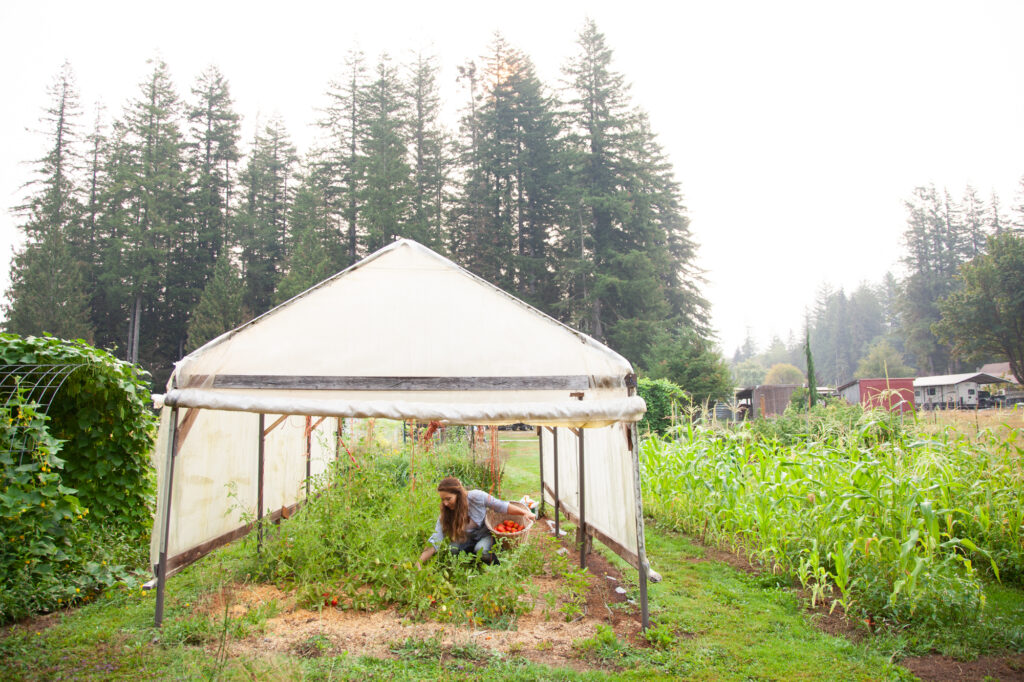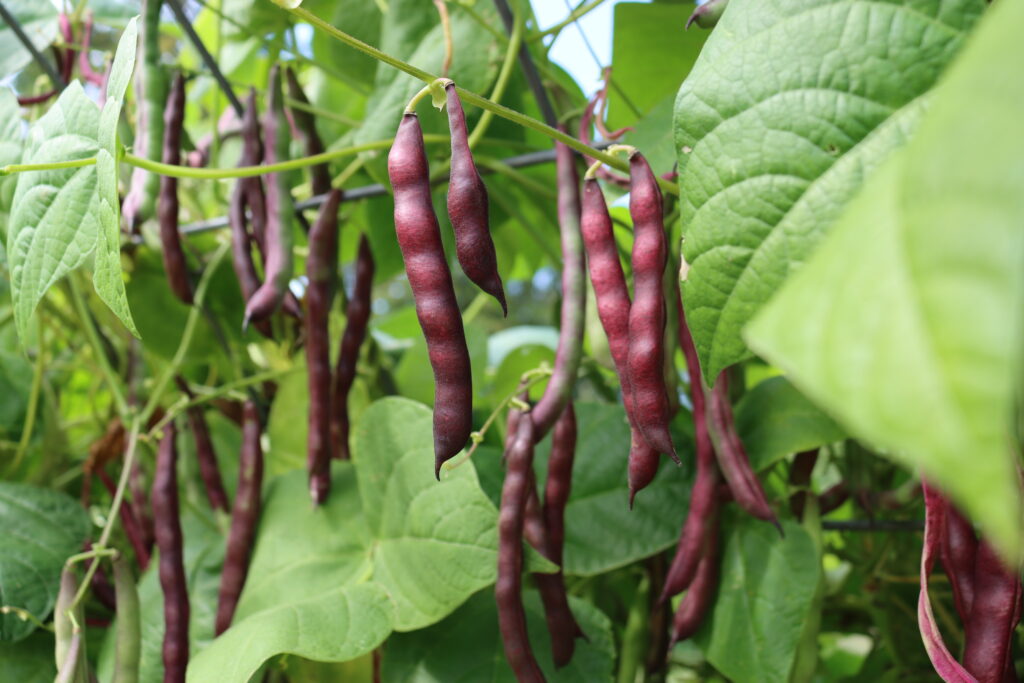Hey, fellow gardeners! I’ve been growing potatoes for more than 10 years, and I can tell you that it can be hard to figure out how many to plant. Don’t worry, though; this guide will make it really easy for you.
Quick Answer
For a family of 4, plant about 40 potato plants (15-20 plants per person) for a year’s worth of potatoes. This typically yields around 125 pounds of potatoes when grown in good conditions
How Many Potatoes Will One Plant Give You?
Under ideal conditions here’s what you can expect
- 3-8 full-sized potatoes per plant
- A few baby potatoes as bonus
- About 3-5 pounds of potatoes per plant
- Total yield varies by variety and growing conditions
Calculating How Many Seed Potatoes You Need
By Row Length
Here’s a super handy guide I use for planning:
- 5-8 row feet: 1 pound of seed potatoes
- 10-15 row feet: 2 pounds
- 20-25 row feet: 3-4 pounds
- 50 row feet: 8-10 pounds
- 100 row feet: 15-20 pounds
By Planting Method
The amount you’ll need changes based on how you cut your seed potatoes:
| Method | Spacing | Seed Amount Needed |
|---|---|---|
| Whole tubers | 1 foot apart | Most seeds |
| Halved tubers | 2 feet apart | Half as many |
| Quartered tubers | 4 feet apart | One-fourth as much |
| Cubed pieces | 6 inches apart | Least amount |
Potato Varieties and Their Yields
High-Yield Varieties (8+ potatoes per plant)
- Kennebec
- Red Pontiac
- Yukon Gold
- Purple Majesty
Medium-Yield Varieties (5-8 potatoes per plant)
- Red Norland
- Viking
- French Fingerling
Low-Yield Varieties (3-5 potatoes per plant)
- Yukon Gem
- Caribe
Tips for Maximum Potato Harvest
-
Plant at the Right Time
- About 2 weeks after last frost
- When soil temperature reaches 45°F
- Avoid wet spring soil
-
Proper Growing Conditions
- Plant 12-14 inches apart
- Leave 3 feet between rows
- Plant 4-6 inches deep
- Use loose, well-draining soil
-
Care During Growing Season
- Hill soil around plants regularly
- Water 1-2 inches weekly
- Use 5-10-10 fertilizer
- Monitor for pests
- Ensure 6-8 hours of sunlight daily
My Pro Tips for Success
-
Always add 10-20% more seed potatoes than ya think you’ll need – trust me, some won’t make it!
-
For continuous harvest:
- Plant different varieties
- Stagger plantings every 2-3 weeks
- Mix early and late-season types
-
Storage Planning:
- Cure potatoes for 2 weeks before storing
- Plan extra if you want some for seed next year
- Account for storage losses
Common Mistakes to Avoid
-
Using grocery store potatoes as seed
- They often have sprout inhibitors
- May carry diseases
- Lower yield potential
-
Improper spacing
- Crowded plants = smaller potatoes
- Too far apart = wasted space
-
Inconsistent watering
- Can cause splitting
- Reduces overall yield
- Makes weird-shaped taters
My Final Thoughts
Growing potatoes ain’t rocket science, but it does take some planning. Start with these guidelines and adjust based on your family’s potato consumption and garden space. Remember, it’s better to plant a bit extra than not enough – you can always share with neighbors or store them for later!
Would ya like to know more about specific potato varieties or growing techniques? Drop me a comment below! And don’t forget to sign up for our newsletter for more gardening tips and tricks!
Last updated: January 2025
What size garden to feed a family of 4 for a year?
Our main annual vegetable garden space is a 20 x 30-foot rectangular bed. We have a 10 x 20-foot high tunnel where I grow all of our tomato plants.
This past year we added another 20 x 20-foot garden bed and three 3×20-foot rows for corn.

Your yield per plant can vary by type and growing season, but this is our average and typical yield.
Beans. Ya probably guessed this is one of my favorites. Green beans go well all by themselves as your vegetable for a meal, or theyll stretch a casserole or stew. One of our favorite foods is a pot of green beans simmered with a bit of fatback (aka bacon) thrown in.
Our green bean variety is a pole bean, and when left to grow on the vine, it can also be used as a dried or shell bean. A lot of times these are also referred to as shelly beans.
Dried beans are awesome possum (confession, Ive never eaten possum, just in case there was any confusion there, but when I get excited about something I tend to rhyme) because theyre packed with protein and calories. This is one of the few times where well get excited about food having a lot of calories.

It can be hard to get enough calories from vegetables and fruit when you truly live off of what you can grow, especially if it’s not livestock (which lets you render down a fat source). A dried bean gives you both.
In my experience, a pole bean gives you a much larger harvest for the amount of space than a bush bean. With our pole beans, I plant approximately a total of 30 plants (3 bean plants on each 6-foot pole with 3 poles to a teepee, so 9 plants for each teepee) and from that I can about 50 to 60 jars of green beans, eat them fresh through the season, and save for both seed and as a dry bean over 200 beans.
How much do you need to grow per person for a year?
aka, how much to plant per person.
There are five vegetable crops that we currently grow enough of that I dont purchase from the store, as in ever.
Watch This BEFORE You Plant Potatoes
FAQ
How many potatoes can a plant grow?
I hope you try out the tips in this guide to increase your potato yield, so you can cultivate even more spuds in the same growing space, which is a delightful bonus! How many potatoes a plant can produce averages between 3 to 8 potatoes per plant in ideal growing conditions. Learn more on the number of potatoes you can grow.
How many seed potatoes are needed to produce a good crop?
The number of seed potatoes needed to produce a good crop is based on the amount of space each plant needs at maturity, as well as the growing conditions, since potatoes need different spacing depending on whether they are grown in a container or in the garden.
How many seed potatoes per row?
There will be 30 potato plants per row, meaning you will have 3*30 = 90 plants. You will need about 11. 25 pounds of seed potatoes for 90 plants. Each plant will come from 1 piece of seed potato, which will be about 2 ounces. This means you will need 90*2 = 180 ounces of seed potatoes (or 180/16 ~ 11. 25 pounds of seed potatoes).
How many potatoes are in a row?
Let’s say that you are planting 3 rows of potatoes in your garden. There will be 30 potato plants per row, meaning you will have 3*30 = 90 plants. You will need about 11. 25 pounds of seed potatoes for 90 plants. Each plant will come from 1 piece of seed potato, which will be about 2 ounces.
How many potatoes do you need to plant a row?
It’s time to figure out how many potatoes you need to plant per foot and how many pounds of potatoes you can expect to get. Assume you have a 25 foot row; in this case, you’ll need approximately 5 pounds of seed potatoes. Say that each seed potato grows 15 pounds of potatoes. That’s 75 pounds of potatoes per row.
How many meals can a potato plant eat?
Since you will get between one and two meals worth of potatoes per plant, you can get a rough idea of how many meals you can have by multiplying the number of plants by 1. 5. So if you plant 40 plants, you can expect to get potatoes for around 60 meals.
